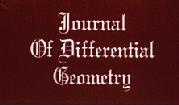$0$-efficient triangulations of $3$-manifolds are defined
and studied. It is shown that any triangulation of a closed,
orientable, irreducible $3$-manifold $M$ can be modified to a
$0$-efficient triangulation or $M$ can be shown to be one of the
manifolds $S^3, \rp$ or $L(3,1)$. Similarly, any triangulation of a
compact, orientable, irreducible, $\bdy$-irreducible $3$-manifold
can be modified to a $0$-efficient triangulation. The notion of a
$0$-efficient ideal triangulation is defined. It is shown if $M$ is a
compact, orientable, irreducible, $\bdy$-irreducible $3$-manifold
having no essential annuli and distinct from the $3$-cell, then
$\stackrel{\circ}{M}$ admits an ideal triangulation; furthermore, it
is shown that any ideal triangulation of such a $3$-manifold can be
modified to a $0$-efficient ideal triangulation. A $0$-efficient
triangulation of a closed manifold has only one vertex or the manifold
is $S^3$ and the triangulation has precisely two
vertices. $0$-efficient triangulations of $3$-manifolds with
boundary, and distinct from the $3$-cell, have all their vertices in
the boundary and then just one vertex in each boundary component. As
tools, we introduce the concepts of barrier surface and shrinking, as
well as the notion of crushing a triangulation along a normal
surface. A number of applications are given, including an algorithm to
construct an irreducible decomposition of a closed, orientable
$3$-manifold, an algorithm to construct a maximal collection of
pairwise disjoint, normal $2$-spheres in a closed $3$-manifold, an
alternate algorithm for the $3$-sphere recognition problem, results
on edges of low valence in minimal triangulations of $3$-manifolds,
and a construction of irreducible knots in closed $3$-manifolds.
